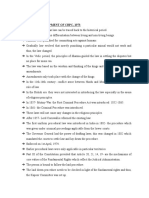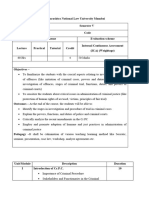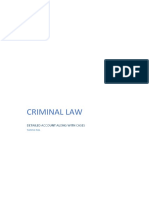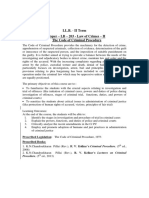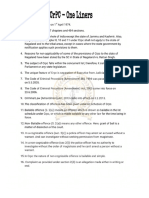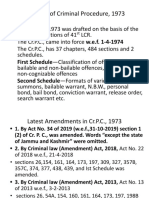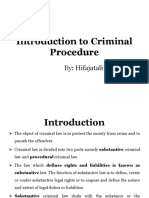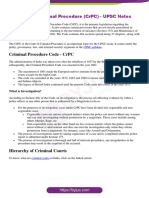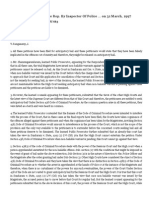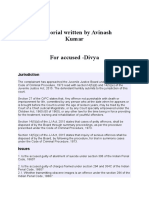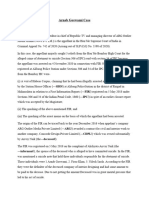0% found this document useful (0 votes)
276 views16 pagesIndian Criminal Law Evolution
The document discusses the history and evolution of criminal law in India from medieval times under Muslim rule and British rule to the present Criminal Procedure Code of 1973. It outlines the key changes introduced by the new Code, including separating the judiciary from the executive, establishing a uniform criminal court system, and enhancing protections for accused individuals. The Code aims to provide fair and efficient procedures for investigation of crimes, trial of offenders, and determination of guilt or punishment.
Uploaded by
Pratik ShekharCopyright
© © All Rights Reserved
We take content rights seriously. If you suspect this is your content, claim it here.
Available Formats
Download as PDF, TXT or read online on Scribd
0% found this document useful (0 votes)
276 views16 pagesIndian Criminal Law Evolution
The document discusses the history and evolution of criminal law in India from medieval times under Muslim rule and British rule to the present Criminal Procedure Code of 1973. It outlines the key changes introduced by the new Code, including separating the judiciary from the executive, establishing a uniform criminal court system, and enhancing protections for accused individuals. The Code aims to provide fair and efficient procedures for investigation of crimes, trial of offenders, and determination of guilt or punishment.
Uploaded by
Pratik ShekharCopyright
© © All Rights Reserved
We take content rights seriously. If you suspect this is your content, claim it here.
Available Formats
Download as PDF, TXT or read online on Scribd
/ 16












